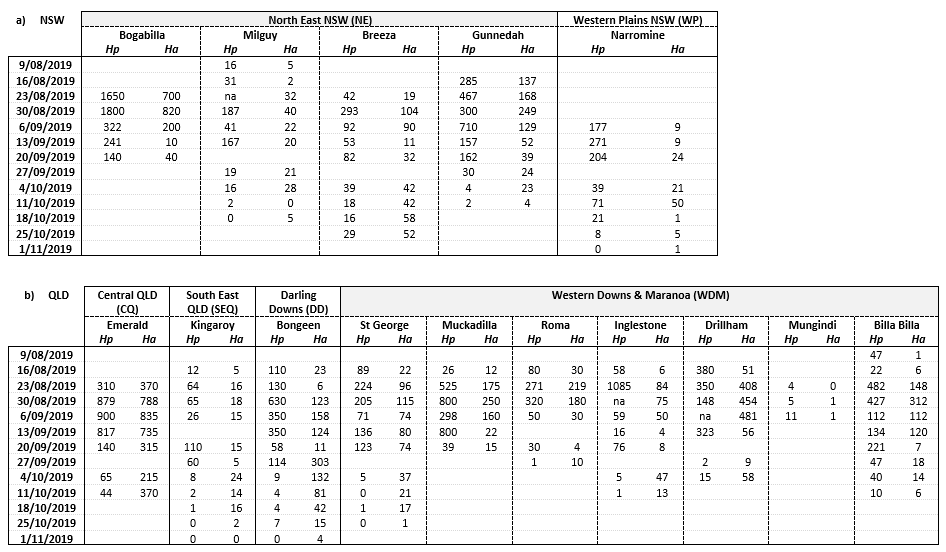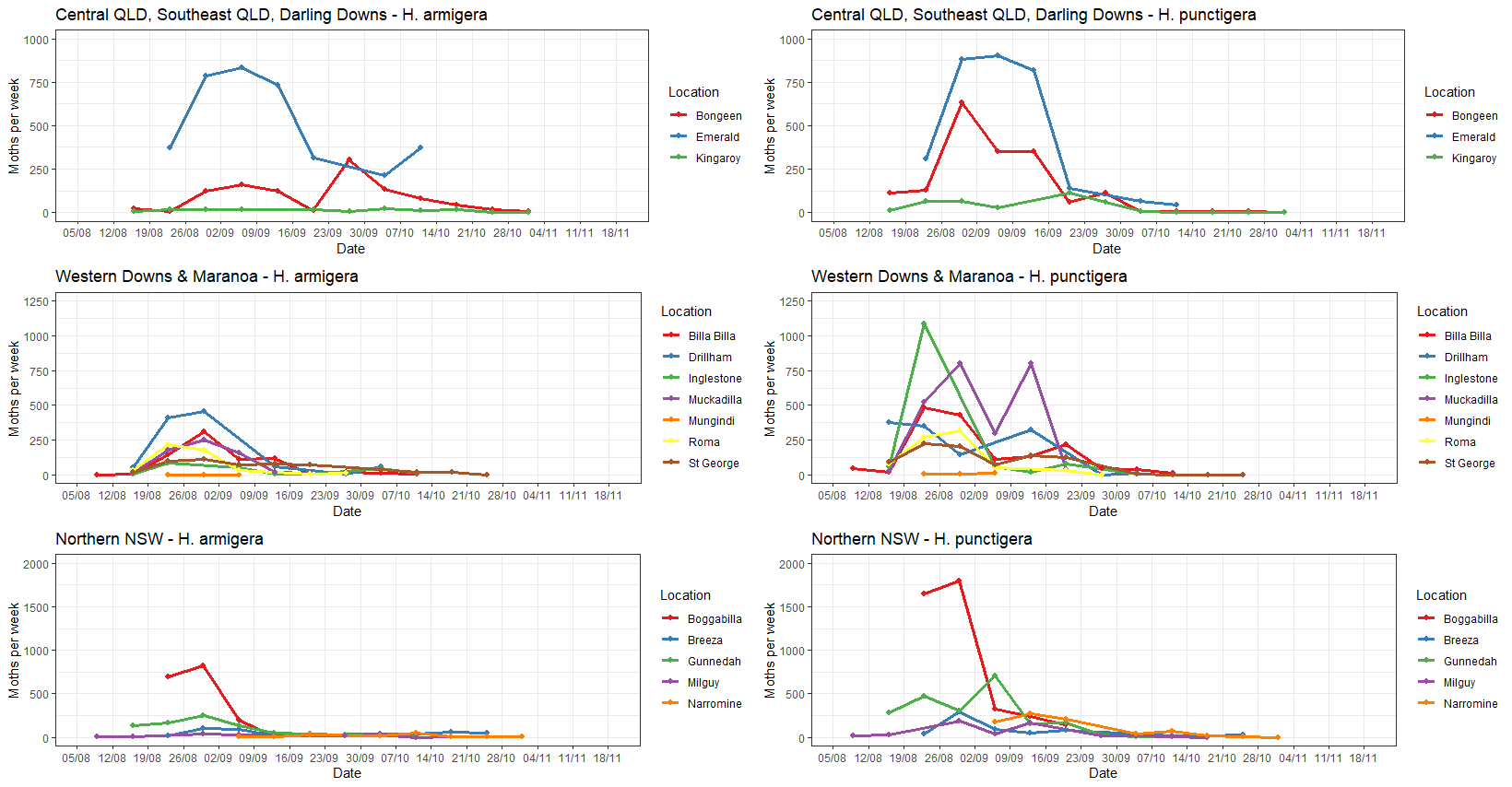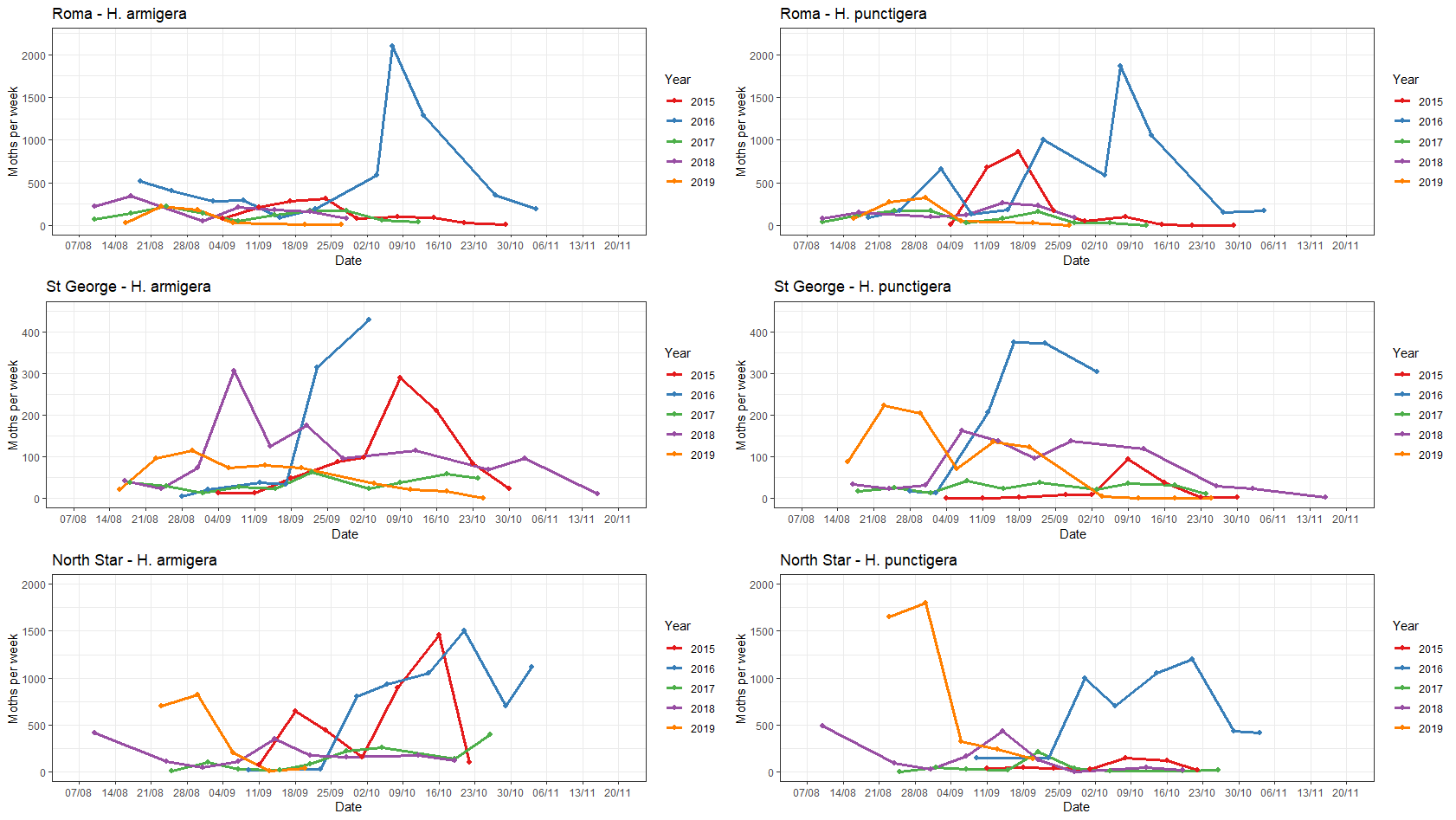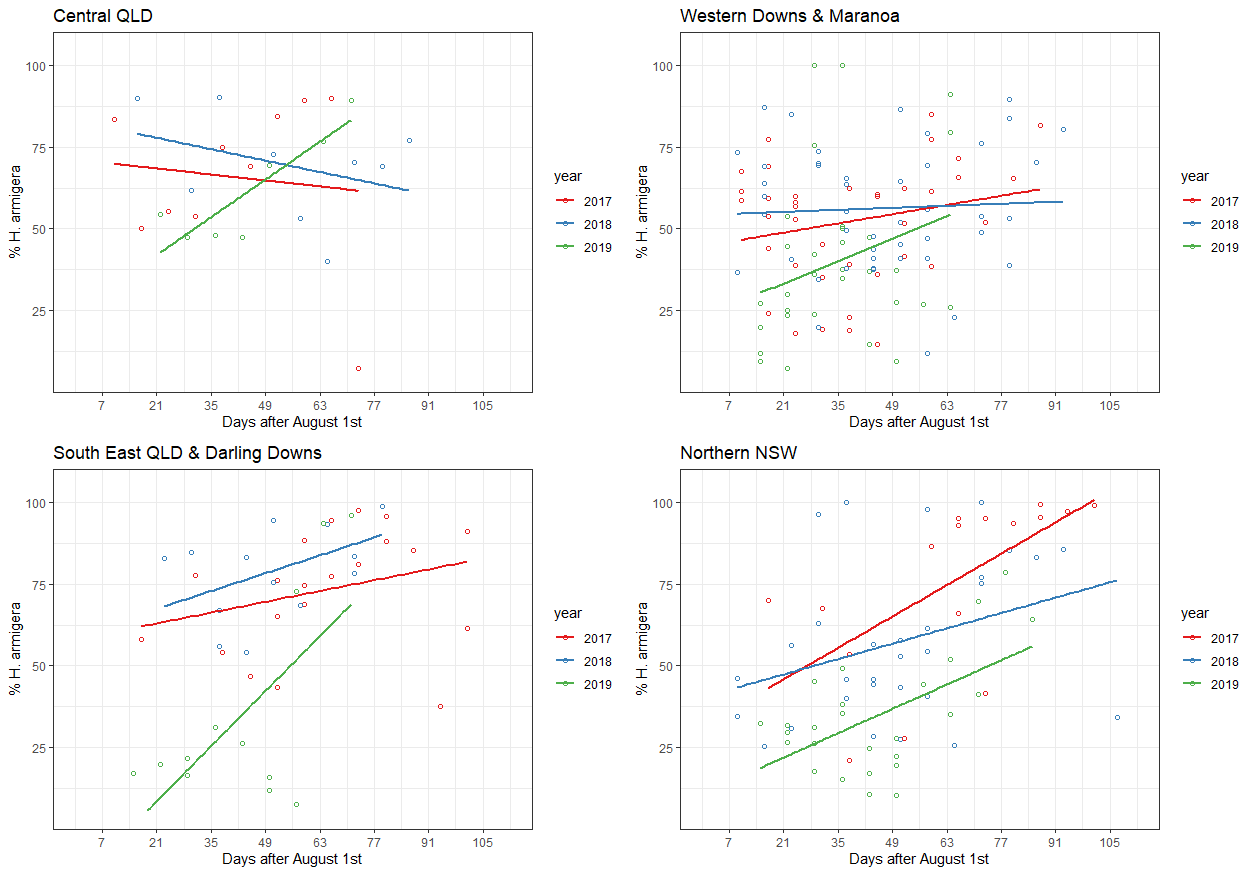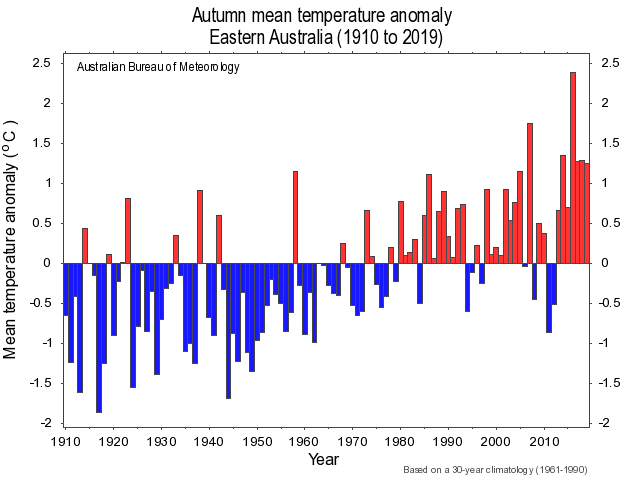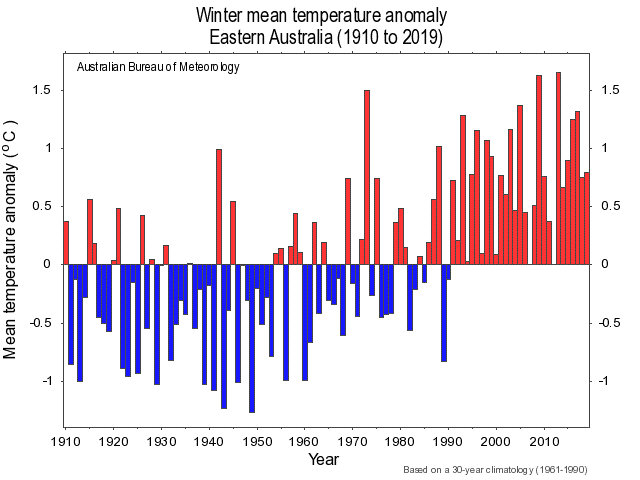Every year the Queensland Department of Agriculture and Fisheries runs a Helicoverpa spp. pheromone trapping program for the Northern Grains Region to detect flights of Helicoverpa armigera and Helicoverpa punctigera in important cropping areas. The trap network provides growers and agronomists with a warning system for potential egg-lay in susceptible crops.
Although very few crops were planted this season due to lack of planting rain, large numbers of moths were still caught early during the season (Table 1 & Figure 1).
Table 1: Pheromone trap counts during the 2019 trapping program.
*Numbers in the table are standardised counts for seven trap nights, calculated as follows: (total no. moths caught/trap nights) x 7.
As the season progressed, moth numbers dropped off rapidly (Figure 1), most likely because of the lack of host-plants (due to severe drought conditions) in the landscape to produce a second generation of Helicoverpa moths. This year’s population ‘drop off’ is particularly evident in comparison with previous seasons’ data; most pheromone trap sites were terminated relatively early this year, as crops ‘finished off’ quickly due to low soil moisture and warm temperatures (Figure 2).
Figure 1: 2019 pheromone trap catch data for sub-regions in Queensland and New South Wales.
Figure 2: Pheromone trap counts over 5 winter-spring cropping seasons for three selected sites: Roma, St. George, and North Star (which was moved nearby to Boggabilla in 2019).
What insights can we gain from several years of pheromone trapping in the Northern region?
This is the fifth year of our pheromone trapping program, and a major result we’ve obtained is that traps are consistently capturing H. armigera moths during winter (Figure 2). There is ‘conventional wisdom’ that states during early spring, that the Helicoverpa larval population will only consist of migratory H. punctigera. Our data continually challenges that assumption, and this year’s data acts as a reminder to agronomists and growers that you should expect H. armigera moths in your crop from mid-August onwards, and plan management strategies accordingly.
Figure 3 shows the percent of H. armigera in the pheromone trap-caught population throughout the winter-spring transition. In Central Queensland, where larvae typically don’t go into pupal diapause, we can usually assume that a high proportion of the Helicoverpa population is H. armigera from very early on. Even in regions where diapause occurs, H. armigera may account for a significant proportion of the overall population during mid-late August.
Figure 3: Percent of H. armigera caught in regional pheromone traps over the past three seasons. Total trap counts below 50 moths (of both species combined) were excluded to prevent overly inflated percentage values.
Are these patterns expected to continue in the future?
The notion of “only punkies in late winter, so we’ll be safe to use a SP” is based on the assumption that the spring H. armigera population consists primarily of individuals emerging from diapause. However, with the trend of warming autumn and winter temperatures (Figure 4) it is likely that a large proportion of H. armigera larvae are not entering into pupal diapause and are instead overwintering as slowly-developing larvae. Migration of H. armigera from other northern source areas may also play an important role in the late winter populations in Southern QLD and Northern NSW cropping regions. More research is needed to determine the source of these moths.
Figure 4: Long-term change in mean temperature anomly during autumn (top) and winter for Eastern Australia. Data from BoM (http://www.bom.gov.au)
Preparing for next season
When making spray decisions in the Northern Region for Helicoverpa during late winter/early spring next year you should be prepared that H. armigera will more than likely be present in your crop.
- Read how to discriminate between H. armigera and H. punctigera
- The Beatsheet has economic threshold calculators for helicoverpa in chickpeas and sorghum
- The Beatsheet video channel has videos on:
This trapping network is funded by the Grains Research and Development Corporation and would not be possibly without our integral network of trap operators:
- Gail Spargo (DAF) – Emerald
- Scott Loughnan (Avenel) – Muckadilla
- Craig Miller (Landmark) – Roma
- Riley Wilkes & Jess Mickelborough (MA Goondiwindi Pty Ltd) – Drillham & Inglestone
- Hugh Brier (DAF) – Kingaroy
- Ed Briton (MCA Goondiwindi Pty Ltd) – Bongeen
- Jamie Street (Street Agricultural Services Pty Ltd) – St. George
- Murray Alywin, Jonty Harris, & Jordan Billsborough (MCA Goondiwindi Pty Ltd) – Billa Billa & Milguy
- Jeremy Dawson (MCA Goondiwindi Pty Ltd) – Mungindi
- Leigh Norton (Delta Agribusiness, Goondiwindi) – Boggabilla
- Bill Manning (Local Land Services) – Gunnedah
- Zorica Duric & Bianca Boss-Bishop (NSW DPI) – Breeza
- Tim Bartimote (Local Land Services) – Narromine
For more information, or if you are interested in being involved in next year’s trapping program, please contact [email protected]
Trapping results from previous years can be found here.

